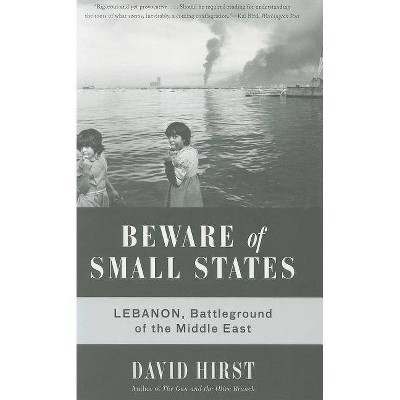Blue Metros, Red States - by David F Damore & Robert E Lang & Karen A Danielsen (Paperback)

Similar Products
Products of same category from the store
AllProduct info
<p/><br></br><p><b> About the Book </b></p></br></br>"Democratic-leaning urban areas in states that otherwise lean Republican is an increasingly important phenomenon in American politics, one that will help shape elections and policy for decades to come. Blue Metros, Red States explores this phenomenon by analyzing demographic trends, voting patterns, economic data, and social characteristics of twenty-seven major metropolitan areas in thirteen swing states that will ultimately decide who is elected president and the party that controls each chamber of Congress. The book's key finding is a sharp split between different types of suburbs in swing states. Close-in suburbs that support denser mixed use projects and transit such as light rail mostly vote for Democrats. More distant suburbs that feature mainly large-lot, single-family detached houses and lack mass transit often vote for Republicans. The book locates the red/blue dividing line and assesses the electoral state of play in every swing state. This red/blue political line is rapidly shifting, however, as suburbs urbanize and grow more demographically diverse. Blue Metros, Red States is especially timely as the 2020 elections draw near"--<p/><br></br><p><b> Book Synopsis </b></p></br></br><p><b>Assessing where the red/blue political line lies in swing states and how it is shifting</b></p><p>Democratic-leaning urban areas in states that otherwise lean Republican is an increasingly important phenomenon in American politics, one that will help shape elections and policy for decades to come. <i>Blue Metros, Red States</i> explores this phenomenon by analyzing demographic trends, voting patterns, economic data, and social characteristics of twenty-seven major metropolitan areas in thirteen swing states that will ultimately decide who is elected president and the party that controls each chamber of Congress.</p><p>The book's key finding is a sharp split between different types of suburbs in swing states. Close-in suburbs that support denser mixed use projects and transit such as light rail mostly vote for Democrats. More distant suburbs that feature mainly large-lot, single-family detached houses and lack mass transit often vote for Republicans. The book locates the red/blue dividing line and assesses the electoral state of play in every swing state. This red/blue political line is rapidly shifting, however, as suburbs urbanize and grow more demographically diverse. <i>Blue Metros, Red States</i> is especially timely as the 2020 elections draw near.</p><p/><br></br><p><b> From the Back Cover </b></p></br></br><p>Democratic-leaning urban areas in states that otherwise vote Republican form an increasingly important trend in American politics, one that will help shape elections and policy for decades to come. <i>Blue Metros, Red States</i> explores this phenomenon by analyzing the demographic shifts, voting patterns, economic data, and social characteristics of twenty-seven major metropolitan areas in thirteen swing states--states that will ultimately decide who is elected president and the party that will control each chamber of Congress.</p><p/><br></br><p><b> Review Quotes </b></p></br></br><br><p>"<i>Blue Metros, Red States</i> is a fresh look at a debate over demographics that had largely stagnated over the course of the past decade. Pivoting from the traditional focus on the racial and age gaps in America, the book instead thoroughly investigates America's yawning urban-rural divide. An absolute must-read for anyone interested in the future of American politics."--Sean Trende, senior elections analyst, RealClearPolitics</p><br><br><p>"All our talk about blue states and red states ignores the fact that few (if any) states are homogeneous. By focusing on the rise of progressive metropolitan areas within conservative states, <i>Blue Metros, Red States</i> makes an enormous contribution to our understanding of American politics. An essential book that also offers a timely warning about how rules and structures we take for granted are undermining our democracy."--E. J. Dionne Jr., senior fellow, the Brookings Institution; author of <i>Code Red: How Progressives and Moderates Can Unite to Save Our Country</i></p><br><br><p>"Impressively detailed analysis of the increasingly fraught blue-red divide within thirteen swing states, how we got here, and where we are headed as conservatives try to keep the lid on a political and cultural pressure cooker of changing demographics, rapidly urbanizing suburbs, and underrepresented metro areas."--Jill Lawrence, commentary editor and columnist, <i>USA Today</i>; author of <i>The Art of the Political Deal: How Congress Beat the Odds and Broke Through Gridlock</i></p><br><br><p>"The battle for the political allegiance of the growing and thriving metropolitan areas of the Sunbelt will be one of the central stories of American politics in the 2020s. This comprehensive and insightful work offers the definitive field guide to the electoral battlefield that may tilt the competition between red and blue America for years to come. Anyone who wants to understand where U.S. politics is heading next should start here."--Ron Brownstein, senior editor at <i>The Atlantic</i> and a senior political analyst for CNN</p><br><p/><br></br><p><b> About the Author </b></p></br></br><p><b>David F. Damore</b> is professor and chair of the Department of Political Science at the University of Nevada, Las Vegas (UNLV), and a nonresident senior fellow with the Brookings Institution's Governance Studies program. <b>Robert E. Lang</b> holds the Lincy Endowed Chair in Urban Affairs in the Greenspun College of Urban Affairs, UNLV, and is executive director of Brookings Mountain West and the Lincy Institute. <b>Karen A. Danielsen</b> is an associate professor in the School of Public Policy and Leadership in the Greenspun College of Urban Affairs, UNLV.</p>
Price History
Cheapest price in the interval: 29.99 on October 23, 2021
Most expensive price in the interval: 29.99 on November 8, 2021
Price Archive shows prices from various stores, lets you see history and find the cheapest. There is no actual sale on the website. For all support, inquiry and suggestion messagescommunication@pricearchive.us




















